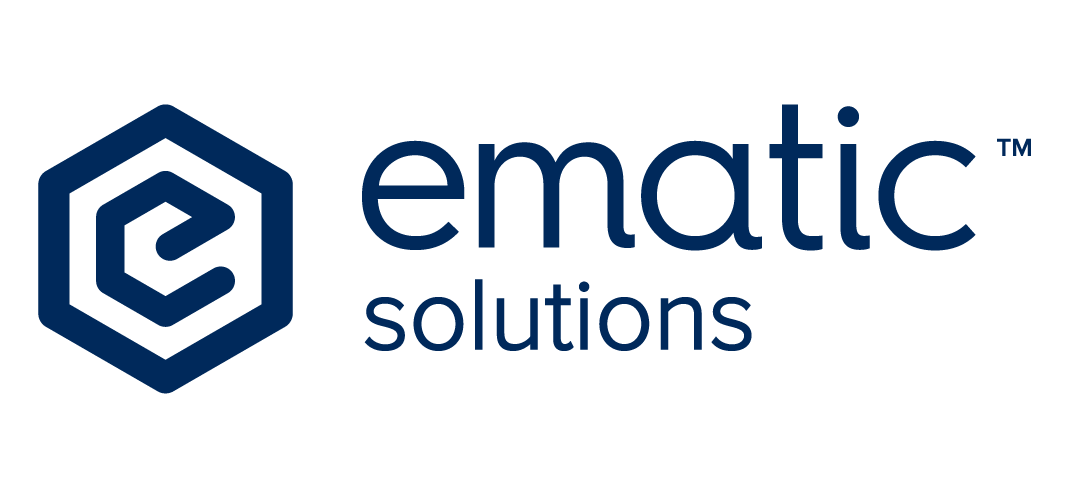On-Page vs. Off-Page SEO: Which Matters More for Rankings?
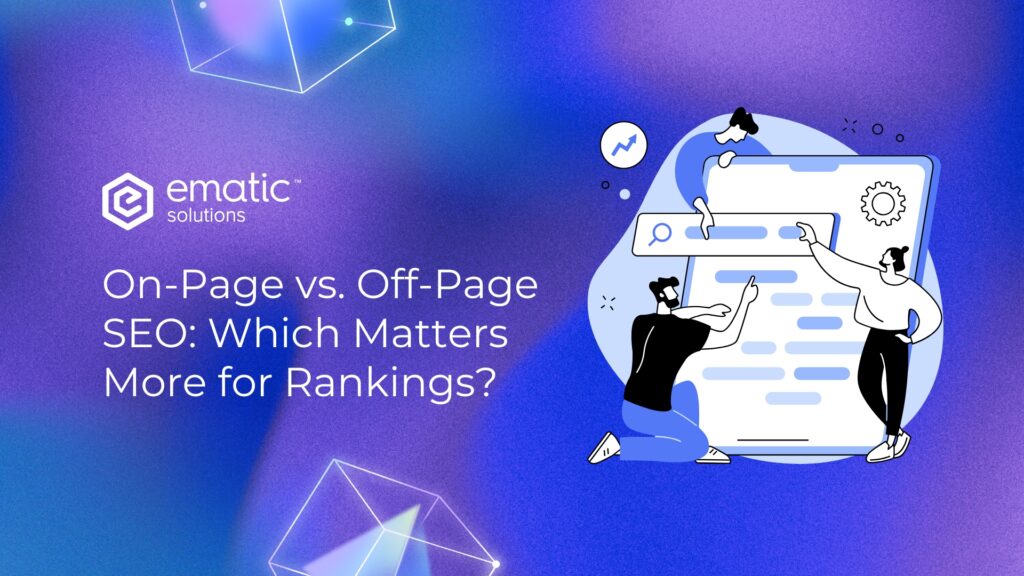
If you’re trying to improve your website’s search rankings, you’ve probably heard about on-page SEO and off-page SEO. But which one actually makes the biggest impact? Should you focus more on optimizing your website’s content and structure, or is building backlinks and external reputation the real key to ranking higher? The truth is, both on-page and off-page SEO play crucial roles in helping your site rank well in search engines like Google. However, understanding how they work, their differences, and which one to prioritize can make a big difference in your SEO strategy. In this article, we’ll break down:✅ What on-page and off-page SEO are✅ Key differences between the two✅ How each impacts your rankings✅ Which one should be your primary focus By the end, you’ll have a clear understanding of how to balance both strategies for maximum search engine visibility and long-term success. What is On-Page SEO? On-page SEO refers to the optimizations you make directly on your website to improve its visibility in search results. This includes refining your content, using proper keywords, optimizing meta tags, and improving internal linking. It’s all about making your website relevant and user-friendly for both search engines and visitors. Key Components of Off-Page SEO High-Quality Content High-quality content is the foundation of effective on-page SEO. It should be valuable, informative, and engaging to keep visitors interested and encourage them to stay on your site longer. Content that directly addresses user intent—what people are searching for—improves the chances of retaining visitors and reducing bounce rates. Additionally, using keywords naturally and strategically within the content helps search engines understand the topic, making it more likely to rank well in search results. Title Tags & Meta Descriptions Title tags and meta descriptions play a crucial role in how both search engines and users perceive your content. A well-optimized title tag pr meta title should include relevant keywords and be compelling enough to encourage users to click. Meanwhile, the meta description, though not a direct ranking factor, influences click-through rates (CTR) by summarizing the content in a way that entices users to visit your page. Together, these elements help improve visibility in search results and attract more visitors. Internal Linking Internal linking helps search engines understand the structure of your website by connecting related pages and establishing content hierarchy. This not only improves crawlability but also ensures that ranking power is distributed across different pages, boosting the visibility of less prominent content. For users, internal links enhance navigation by guiding them to relevant pages, increasing engagement and time spent on the site. URL Structure & Image Optimization A well-structured URL provides clarity for both search engines and users. URLs that are short, descriptive, and contain relevant keywords tend to rank better and improve user experience. Similarly, optimizing images is essential for both performance and accessibility. Search engines rely on alt text to understand image content, which helps with rankings while also making the site more accessible to visually impaired users. Proper image compression and formatting also contribute to faster page loading speeds, enhancing overall user experience. Mobile-Friendliness & Readability With most internet traffic coming from mobile devices, ensuring that your website is mobile-friendly is no longer optional—it’s essential. A website that doesn’t display properly on smaller screens or takes too long to load will frustrate users and increase bounce rates, signaling to search engines that your content isn’t providing a good experience. Similarly, readability plays a huge role in keeping visitors engaged. No one wants to struggle through walls of text, tiny fonts, or poor contrast. If your content is hard to read, visitors will leave quickly—hurting both engagement and rankings. What is Off-Page SEO? Off-page SEO refers to external factors that influence your website’s authority and credibility. The main focus is link-building—getting other reputable websites to link back to yours—but it also includes social signals, brand mentions, digital PR, and local SEO efforts like optimizing your Google Business Profile (GBP) Key Components of Off-Page SEO Backlinks (Link Building) Backlinks are among the most important factors in off-page SEO. When authoritative websites link to your content, it signals trust and credibility to search engines. However, quality is more important than quantity—a few links from high-authority, relevant websites carry more weight than numerous low-quality backlinks. Poor-quality links from spammy sites can actually harm your SEO, so link-building should focus on securing natural, relevant, and valuable links. For deeper insights into the importance of backlinks, explore how backlinks can boost your organic traffic. Brand Mentions & Citations Even if they don’t include direct backlinks, brand mentions across the web can contribute to SEO success. When reputable sites or publications mention your brand, search engines take note of this authority. Similarly, local business citations—such as listings in directories like Google My Business, Yelp, or industry-specific platforms—help establish credibility and improve local SEO rankings. Guest Blogging & Digital PR Writing guest posts for well-established blogs or news outlets allows you to showcase your expertise while earning backlinks to your site. Digital PR efforts, such as press releases, interviews, and feature stories, also contribute to building brand authority. These strategies not only enhance your search rankings but also position your brand as an industry leader. Update Google Business Profile (GBP) When it comes to local SEO, Google Business Profile (formerly Google My Business) is one of the most powerful tools you can use to improve your online presence. Having a well-optimized GBP listing helps businesses appear in local search results, Google Maps, and the “Local Pack” when users search for services near them. This is especially important for brick-and-mortar businesses and service providers who rely on local customers. A complete and active profile increases credibility and encourages potential customers to choose your business over competitors. Key Differences Between On-Page and Off-Page SEO Aspect On-Page SEO Off-Page SEO Definition Optimization done within your website. External efforts to boost credibility. Control Fully within your control. Relies on other websites and external platforms. Goal Improve content relevance and user experience. Build website trust
Internal Linking: A Simple Strategy for Better SEO
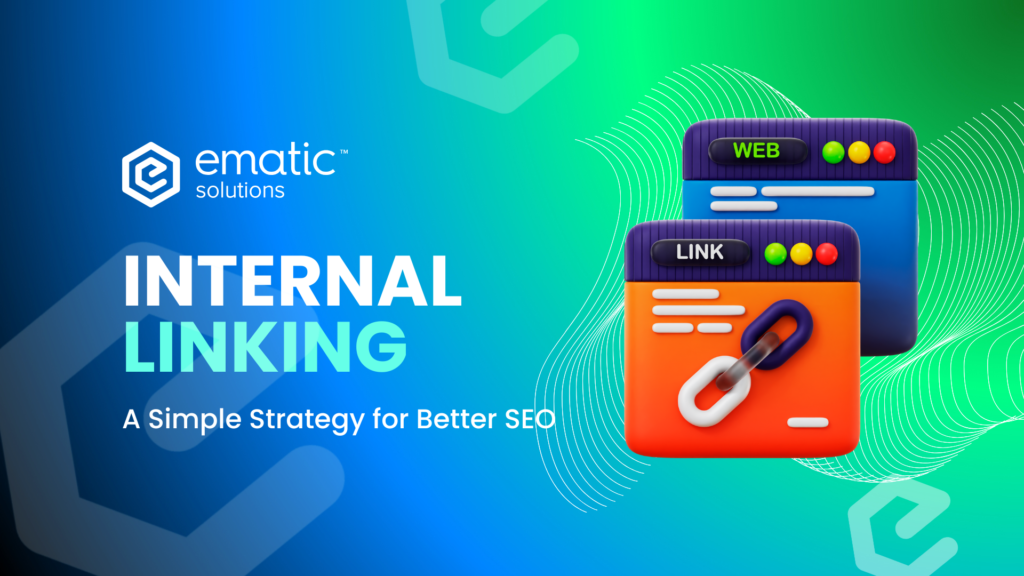
Internal linking is a simple yet powerful SEO strategy that often goes unnoticed. By linking pages within your website, you create a clear path for visitors to navigate your content while helping search engines understand your site’s structure. When done right, it improves user experience, boosts rankings, and strengthens your overall SEO. This guide will show you why internal linking is essential and how to make the most of it. What Is Internal Linking? Internal linking is simply linking from one page on your website to another. The main purpose is to help users explore related content and guide search engines in understanding your site. Here is a simplified illustration of what internal links look like: For example, if you have a blog post on “The Best Winter Jackets,” and you link to another post on “How to Layer for Winter,” that’s an internal link. Think of your website like a web, where each page is connected to another. The stronger these connections, the better the experience for users—the more Google will love your site. Internal Links vs. External Links: What’s the Difference? Internal links connect pages on your own site to make it easier for both users and search engines to find their way around. External links, however, point to other websites and can build credibility by linking to trusted sources. Both types of links are important for SEO—internal links improve navigation and user experience, while external links add value and help boost your site’s authority. Types of Internal Links 1. Navigation Links These are the links in your website’s menu, sidebar, or footer that help visitors get to key pages like “Shop,” “Blog,” or “Contact Us.” 2. Contextual Links These are the links you add within your content, usually using anchor text (the clickable text). They’re the most valuable for SEO because they provide context and guide users to relevant pages. Example:“Stay ahead in 2025 with the best SEO tools to optimize your website and boost rankings.” 3. Breadcrumb Links Breadcrumb links are like little signposts that show users where they are on your site and make it easy for them to navigate back. You’ll usually see them at the top of the page, right below the main menu. It might look something like this: Home > Blog > SEO > Internal Linking Each part is clickable, so users can jump back to any section they want without having to hit the back button or search through the menu. 4. Image Links Clickable images that link to other pages also count as internal links. Just make sure they have alt text so search engines can understand what they’re about. 7. Related Post Links These are links that appear at the end of blog posts, suggesting other related posts to keep users engaged. These help drive traffic to other content and can keep visitors on your site longer. 9. Call-to-Action (CTA) Links CTA links are a type of internal link designed to encourage users to take action, such as making a purchase, signing up for a newsletter, or downloading an ebook. These links are usually prominent, styled as buttons, and placed strategically on pages to guide users towards conversion goals. Why Internal Linking is Important for SEO? It Helps Search Engines Discover and Index Your Pages Search engines use bots to crawl your site, following links to find and index pages. If a page isn’t linked anywhere, it might not even show up in search results. Internal links ensure that all your pages are accessible and properly indexed. It Passes Authority Between Pages Some pages on your site naturally have more authority—like your homepage. By linking from these stronger pages to others, you help spread that authority (also known as “link juice”), improving rankings for important pages. If your homepage gets a lot of backlinks, linking from there to a new product page can help it rank better in search results. It Keeps Visitors on Your Site Longer Ever clicked on an interesting link in an article and ended up reading five more posts? That’s the power of internal linking! It encourages visitors to stay longer, which reduces bounce rates and signals to Google that your content is valuable. It Helps Rank Important Pages Higher If there’s a page you really want to rank—like a key product or service page—linking to it frequently from relevant content can signal to Google that it’s an important page. How to Set Up an Internal Linking Strategy? Building a strong internal linking strategy is key to getting the most out of your website’s SEO potential. Here’s how to set it up: 1. Start with Your Most Important Pages Focus on linking to your most valuable pages first. These could be high-conversion pages like product pages, key service pages, or cornerstone content. Linking to these often helps boost their visibility and SEO rankings. Think of these pages as your site’s “powerhouses” that need more internal links. 2. Create a Logical Structure Organize your content in a way that makes sense for both users and search engines. Group related pages into categories and use internal links to connect them. For instance, if you have a blog post about SEO, link to other related posts, guides, or services on SEO. This helps keep visitors engaged and encourages them to explore more. Example: Main Guide: “The Ultimate SEO Guide” 3. Use Natural, Descriptive and Keyword-Rich Anchor Text Anchor text is the clickable part of a hyperlink. Instead of using generic phrases like “click here,” use descriptive or keyword-rich text that tells users and search engines what the linked page is about. ❌ Poor Anchor Text: “Click here to read more.”✅ Good Anchor Text: “Learn more in our Beginner’s Guide to SEO.” 4. Link to Deep Pages, Not Just the Homepage Don’t just link to your homepage or top-level pages. Make sure to link to deeper, less-visited pages, like blog posts or category pages. These pages might not get a lot of natural traffic, but by linking
Long-Tail Keywords: How to Effectively Use Them in SEO
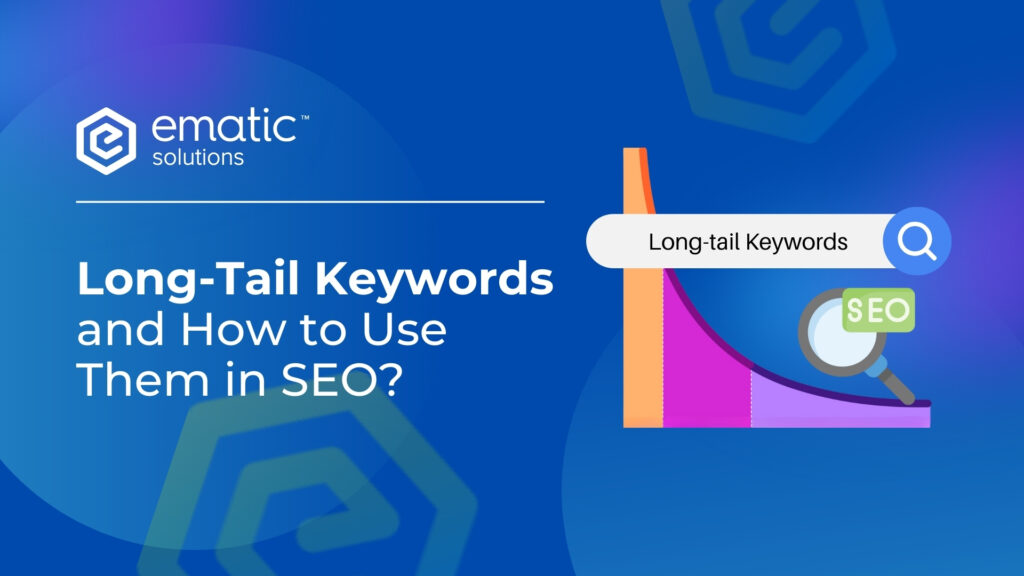
What are Long-Tail Keywords? Long-tail keywords are specific phrases that consist of three or more words and are highly focused on a particular topic or audience. Unlike short-tail keywords, which are broader and more competitive (e.g., “shoes”), long-tail keywords target niche markets (e.g., “comfortable walking shoes for women”). These keywords may have lower search volumes, but they often attract highly relevant traffic and are easier to rank for in search engines. They reflect what users are specifically searching for and help businesses connect with their ideal customers. Example of Long-Tail Keywords Below are examples of how people often use them when searching: Short-Tail Keyword: “shoes”Medium-Tail Keyword: “running shoes”Long-Tail Keyword: “what is the best running shoe for beginners” Additional examples: Comparing Short-Tail vs. Medium-Tail vs. Long-Tail Keywords Aspect Short-tail Keyword Medium-tail Keyword Long-Tail Keyword Keyword “laptops” “laptops for students” “best laptops for students under $500” Search Volume High Moderate Low Competition High Moderate Low Search Intent Semi Semi-specific Highly specific Conversion Potential Low Medium High Why Long-Tail Keywords are Important in SEO? A 2020 study by Backlinko analyzed over 1 billion search queries and found that long-tail keywords have a 3-5% higher click-through rate compared to head terms. This highlights the significant impact the keywords in driving meaningful engagement and conversions. Here are some reasons why targeting long-tail keywords is necessary for SEO: Search Intent Example of Keyword Audience Behaviour Informational “what is a black tie dress code” Seeking knowledge or understanding about dress codes, typically without immediate intent to buy. Commercial “summer dress for women” Comparing options or researching product categories to find the best match before making a decision. Transactional “buy dress online Malaysia” Ready to purchase and are looking for a platform or store to complete their transaction. Navigational “Zara outlets in Malaysia” Searching for nearby physical locations to meet their immediate needs. Local “costume rental shop near me” Specifically looking for a known brand or store location, intending to visit or browse directly. How to Effectively Use Long-Tail Keywords for SEO? Mastering the use of long-tail keywords requires a mix of research, content creation, and strategic optimization. Each step plays a vital role in maximizing their impact. To find the best long-tail keywords and effectively implement your strategy, doing any of these steps is considered a must: Step Action Examples Conduct Thorough Keyword Research Use tools like Google Keyword Planner, SE Ranking, or Ahrefs to find relevant long-tail keywords. Focus on search intent and relevance. Look for “question-based” keywords. “How to choose the best running shoes for beginners” Create Specific and Valuable Content Incorporate long-tail keywords naturally into your content. Create blogs, product comparisons, tutorials, or listicles. Blog post titled “How to Choose Comfortable High-Heeled Shoes for Weddings” Optimize Meta Tags and Headings Include long-tail keywords in meta titles, descriptions, and H1 or H2 headings. Ensure they are engaging and descriptive. Meta title: “Shop Organic Skincare for Sensitive Skin Online” (instead of just “Organic Skincare Products”) Leverage FAQ Sections Answer common questions related to your long-tail keywords. This can help with featured snippets. FAQ: “Best laptops for gaming under $1,000” with answers addressing battery life, processor, storage, etc. Use Keywords in Alt Text and URLs Optimize images with descriptive alt text including long-tail keywords. Create SEO-friendly URLs. Alt text: “A young woman using an ergonomic chair for back pain relief” URL: “/ergonomic-office-chairs-for-back-pain” 3 Things to Avoid in Targeting Long-Tail Keywords When working with long-tail keywords, certain pitfalls can hinder your success. Therefore, avoiding these common mistakes will help you refine your strategy: How to Measure the Impact of Long-Tail Keywords Tracking and analyzing the performance of your long-tail keyword strategy ensures continuous improvement and alignment with business goals. To understand the effectiveness of your strategy, it is advisable for you to: Key Takeaways Ready to Improve Your SEO Keyword Strategy? At Ematic Solutions, we specialize in crafting data-driven SEO strategies to boost our client’s online presence. Whether you’re new to SEO or looking to optimize your existing strategy, our team is here to help. Contact us today and get a free consultation to unlock the full potential of SEO keywords for your business!
What Actually Happened in The March 2024 Core Update?
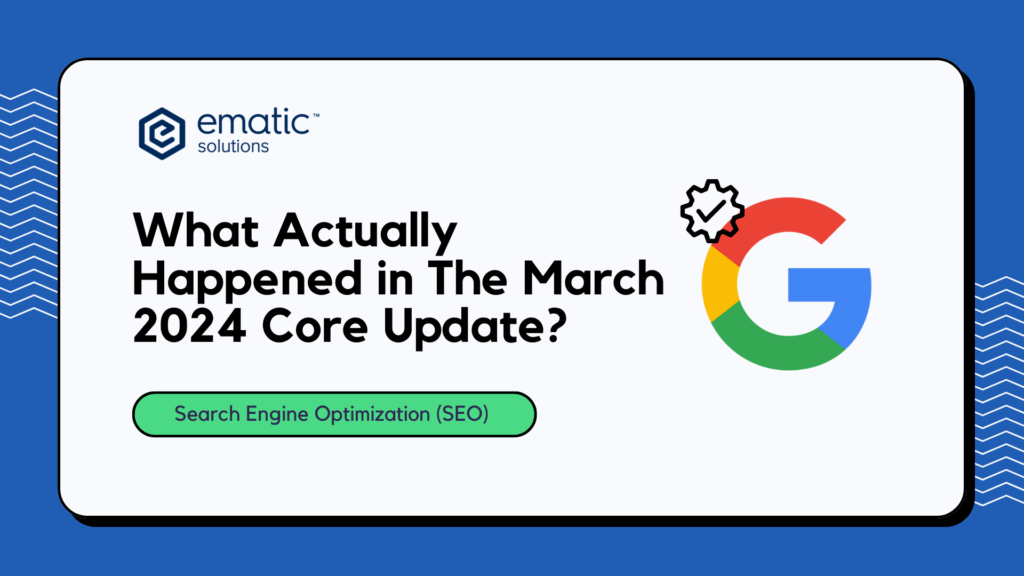
The most recent Google algorithm and spam policy updates on 5th March 2024 is one of Google’s constant efforts throughout the years, in refining its algorithms, and policies to ensure that millions of people every day have access to the most useful and high-quality information available. Google’s ongoing efforts are meant to adapt to the growing challenges, including the rapid increase of spam and low-quality content that seeks to manipulate search rankings rather than provide genuine value to users. Google core update in March 2024 alongside its previous efforts, aims to significantly enhance search result quality and cut down on spammy content by an expected 40%. This shift will have a considerable impact on the digital marketing and SEO landscape, along with content creators, webmasters, and businesses that depend on Google for visibility, traffic, and revenue. The main highlights of the new Google core update? Improved Quality of Search Ranking Google’s latest update is a series of algorithmic enhancements to its core ranking systems. The goal of these changes is to prioritize the surfacing of helpful, original content and remove unoriginal, low-quality information in search results. This initiative is a continuation of the efforts initiated in 2022 to dial down on unhelpful content, making strides in ensuring that search results lead to valuable and relevant information. By refining these core ranking systems, Google aims to better recognize the quality of web pages, focusing on those that offer a superior user experience and are genuinely designed for human engagement rather than merely to manipulate search engine rankings. Enhanced and Updated Measures Against Spam The digital landscape is constantly evolving, with spammers developing increasingly advanced methods to game the system. Therefore, Google’s comprehensive update to its spam policies aimed at keeping the lowest-quality content out of its search results. This includes Google taking serious measures to discourage expired websites repurposed as spam repositories and obituary spam, among others. To address the manipulative behaviors, the enhanced Google spam policy will focus on these three particular areas: One of the significant challenges in the fight against low-quality content is the use of automation to generate such content at scale. While Google has policies against this practice, technological advancements have blurred the lines between content generated by humans, automation, or a combination of both. In response, Google is strengthening its policies to target not just automated content but any content produced at scale with the primary intention of boosting search rankings, regardless of the method of creation. This includes content that pretends to offer answers to popular searches but ultimately fails to deliver any meaningful information. Another area of concern is site reputation abuse, where reputable sites host low-quality content from third parties, hoping to leverage the host site’s strong reputation for ranking benefits. This can mislead visitors and tarnish the host site’s credibility. Google’s updated policies will now classify such low-value, third-party content as spam, giving site owners a grace period to make necessary adjustments before enforcement begins. The practice of purchasing expired domains to repurpose them to boost the search ranking of low-quality content is also under critical observation by Google. Such tactics can mislead users into believing the new content is associated with the domain’s previous reputation, which is often not the case. Under the new policies, this practice will be considered spam, closing yet another loophole exploited by content spammers. Key pitfalls to avoid with this new Google core update? If you are one of those who might be impacted by this latest core update and want to ensure that your site weathers this update effectively, be mindful of the following pitfalls which could significantly impact your site’s online presence: What to do next? Overall, these latest updates represent a significant step forward in this ongoing effort to improve search quality, promising a better, more reliable search experience for users worldwide. However, as Google rolls out these updates, content creators, marketers, and website owners must adapt to these changes, focusing on creating high-quality, original content that genuinely serves the needs and interests of their audience. These changes signal the importance of adapting to these evolving standards for anyone involved in creating or promoting content online. Understanding and shifting SEO strategy to avoid the key pitfalls is important to maintain or improve the site’s ranking in the new Google core update. Enhance Your Online Presence to the Next Level with Ematic Solutions As Google continues to refine its approach to enhancing search quality, aligning your SEO strategy with these evolving standards is essential. Ematic Solutions is here to guide you through this constantly evolving landscape. Our team is dedicated to helping you improve your website’s visibility and drive meaningful traffic. We can help you by: Contact us today for a free consultation, and let’s work together to leverage the latest Google core update for your site’s growth.
